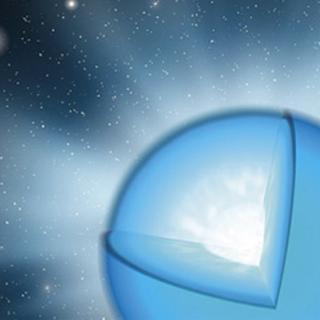Bibcode
Bowman, D. M.; Burssens, S.; Simón-Díaz, S.; Edelmann, P. V. F.; Rogers, T. M.; Horst, L.; Röpke, F. K.; Aerts, C.
Bibliographical reference
Astronomy and Astrophysics
Advertised on:
8
2020
Journal
Citations
109
Refereed citations
91
Description
Context. Massive stars are predicted to excite internal gravity waves (IGWs) by turbulent core convection and from turbulent pressure fluctuations in their near-surface layers. These IGWs are extremely efficient at transporting angular momentum and chemical species within stellar interiors, but they remain largely unconstrained observationally.
Aims: We aim to characterise the photometric detection of IGWs across a large number of O and early-B stars in the Hertzsprung-Russell diagram, and explain the ubiquitous detection of stochastic variability in the photospheres of massive stars.
Methods: We combined high-precision time-series photometry from the NASA Transiting Exoplanet Survey Satellite with high-resolution ground-based spectroscopy of 70 stars with spectral types O and B to probe the relationship between the photometric signatures of IGWs and parameters such as spectroscopic mass, luminosity, and macroturbulence.
Results: A relationship is found between the location of a star in the spectroscopic Hertzsprung-Russell diagram and the amplitudes and frequencies of stochastic photometric variability in the light curves of massive stars. Furthermore, the properties of the stochastic variability are statistically correlated with macroturbulent velocity broadening in the spectral lines of massive stars.
Conclusions: The common ensemble morphology for the stochastic low-frequency variability detected in space photometry and its relationship to macroturbulence is strong evidence for IGWs in massive stars, since these types of waves are unique in providing the dominant tangential velocity field required to explain the observed spectroscopy.
Aims: We aim to characterise the photometric detection of IGWs across a large number of O and early-B stars in the Hertzsprung-Russell diagram, and explain the ubiquitous detection of stochastic variability in the photospheres of massive stars.
Methods: We combined high-precision time-series photometry from the NASA Transiting Exoplanet Survey Satellite with high-resolution ground-based spectroscopy of 70 stars with spectral types O and B to probe the relationship between the photometric signatures of IGWs and parameters such as spectroscopic mass, luminosity, and macroturbulence.
Results: A relationship is found between the location of a star in the spectroscopic Hertzsprung-Russell diagram and the amplitudes and frequencies of stochastic photometric variability in the light curves of massive stars. Furthermore, the properties of the stochastic variability are statistically correlated with macroturbulent velocity broadening in the spectral lines of massive stars.
Conclusions: The common ensemble morphology for the stochastic low-frequency variability detected in space photometry and its relationship to macroturbulence is strong evidence for IGWs in massive stars, since these types of waves are unique in providing the dominant tangential velocity field required to explain the observed spectroscopy.
Related projects

Physical properties and evolution of Massive Stars
This project aims at the searching, observation and analysis of massive stars in nearby galaxies to provide a solid empirical ground to understand their physical properties as a function of those key parameters that gobern their evolution (i.e. mass, spin, metallicity, mass loss, and binary interaction). Massive stars are central objects to
Sergio
Simón Díaz